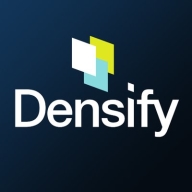

CloudSphere and Densify compete in the cloud management sector. Densify appears to have a slight edge due to its advanced optimization capabilities.
Features: CloudSphere provides comprehensive cloud governance, including security, compliance, and policy management. It's particularly effective in managing multi-cloud environments and offers a single pane of visibility. CloudSphere also integrates well with multiple cloud platforms enhancing manageability. Densify excels with workload optimization, providing tools for resource management and cost-efficiency. Its features allow for increased server density and supply-demand planning, providing detailed visibility across multiple vCenters and cloud accounts. Additionally, Densify helps improve software performance through workload factor analysis.
Room for Improvement: CloudSphere could enhance its predictive analytics for better resource forecasting and improve its latency issues that were observed in earlier versions. Its error messaging system needs refinement to provide clearer insights. The user interface could also benefit from more intuitive design. Densify is perceived as having a steeper learning curve, and its reporting tools could be more user-friendly. There is room to improve the initial setup experience to be less complex. Its pricing structure could be more transparent, especially for potential cost savings.
Ease of Deployment and Customer Service: CloudSphere offers straightforward deployment and efficient onboarding supported by prompt customer service. Its broad support services assist with multiple issues but could be enhanced by more specialized guidance as seen with Densify. Densify's deployment process is streamlined and backed by targeted support for workload management, providing highly specialized assistance tailored to specific user needs.
Pricing and ROI: CloudSphere offers flexible pricing, which appeals to policy-driven organizations seeking substantial ROI through its governance capabilities. Densify, with its higher initial costs, promises significant savings over time from its optimization efficiencies. Organizations may find that the upfront investment in Densify pays off through greater long-term resource savings.
| Product | Market Share (%) |
|---|---|
| CloudSphere | 0.9% |
| Densify | 1.0% |
| Other | 98.1% |


| Company Size | Count |
|---|---|
| Small Business | 1 |
| Midsize Enterprise | 1 |
| Large Enterprise | 9 |
CloudSphere is an intelligent cloud management platform that enables organizations to plan, optimize, secure, and scale their cloud adoption. The platform has three solutions to help organizations manage dynamic, multi-cloud environments, including cloud migration planning, cloud cost management, and cloud security posture management. By using application intelligence (AI), the platform is able to discover and collect all of the data points that collectively define an application across on-premises, hybrid, and cloud environments. Because the solution is very scalable, it can accommodate companies of all sizes.
The CloudSphere solution is ideal for:
CloudSphere Product Highlights
CloudSphere Features
CloudSphere has many valuable key features. Some of the most useful ones include:
CloudSphere Benefits
There are many benefits to implementing CloudSphere. Some of the biggest advantages the solution offers include:
Densify is a hybrid cloud and container resource management platform that makes workloads self-aware of their precise resource requirements and automates the resource management and selection process. This solution helps you control your cloud spend and also helps your apps perform and scale better. Densify enables you to match your cloud requirements with the optimal cloud supply. Additionally, Densify is the only technology that leverages patented, predictive machine learning-powered analytics to perform advanced modeling of workload patterns, and provide precise optimization directives. It is ideal for cloud engineers, container platform owners, and IT finance.
Densify works by:
Densify Features
Densify has many valuable key features. Some of the most useful ones include:
Densify Benefits
There are many benefits to implementing Densify. Some of the biggest advantages the solution offers include:
We monitor all Cloud Management reviews to prevent fraudulent reviews and keep review quality high. We do not post reviews by company employees or direct competitors. We validate each review for authenticity via cross-reference with LinkedIn, and personal follow-up with the reviewer when necessary.